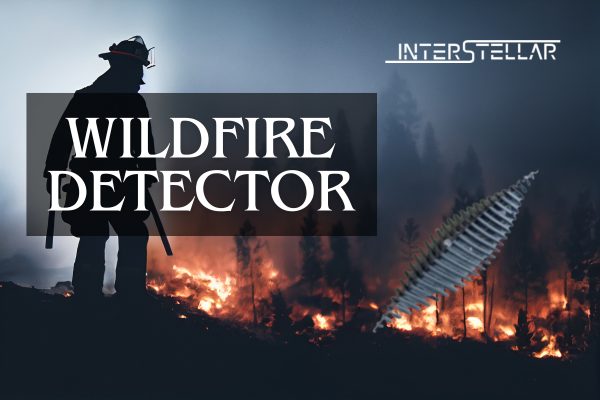PyriPod: A Nature-Inspired Wildfire Early Warning System Wins James Dyson Award
A groundbreaking device designed to detect wildfires at an early stage has won the prestigious James Dyson Award in the UK. The device, named Pyri, is inspired by nature and aims to provide timely alerts to authorities as soon as a wildfire is detected.
Nature-Inspired Design for Wildfire Detection
Pyri resembles a pine cone and is constructed using bio-based materials. It is a small, heat-triggered transmitter that sends out a radio signal when exposed to wildfire conditions. Blake Goodwyn, a member of the development team, explained that the device is made from natural materials such as wax, charcoals, and composites. These materials are arranged in a unique configuration, allowing the device to activate a power source when exposed to heat. This power source releases a radio wave that can be detected tens of kilometres away, enabling authorities to pinpoint the fire’s location.
Deployment and Operation of the PyriPod
The battery-powered PyriPod can be deployed either from the air or on the ground. It can be dropped by hand or thrown from aircraft, where it waits for activation without using power. Goodwyn highlighted that Pyri’s innovative design relies on a “decomposed state” of the power source. When a fire approaches, the heat causes the materials to recombine, triggering the device to send a radio signal. The antenna, made from a charcoal composite, then transmits the signal using CB radio frequencies, which can be detected up to 50 kilometres away.
Environmental Sustainability and AI Integration
Designed to have minimal environmental impact, the PyriPod undergoes what the team describes as “graceful degradation.” When the device is consumed by fire, it leaves behind little to no pollution, unlike plastic-based devices. This makes Pyri both effective and eco-friendly. Additionally, Pyri integrates AI to cross-reference signal data with weather and satellite information. This allows for more accurate predictions of wildfire spread, providing essential information to emergency responders and at-risk communities for timely evacuations.
Future Potential and Further Testing
The device has been developed with remote and vulnerable communities in mind, especially those unprepared for large-scale wildfires. Goodwyn emphasised that many communities will face increasing wildfire risks in the coming years but lack the tools and experience to manage these events. Pyri aims to bridge this gap by providing scalable and efficient early detection. The design team, including members Blake Goodwyn, Karina Gunadi, Tanghao Yu, and Richard Alexandre, have tested over 20 prototypes and are now preparing for further trials in controlled environments.





